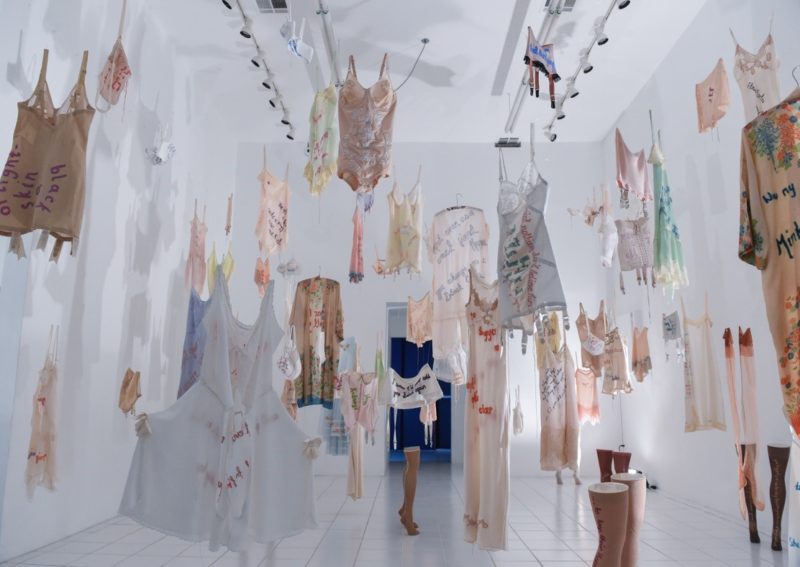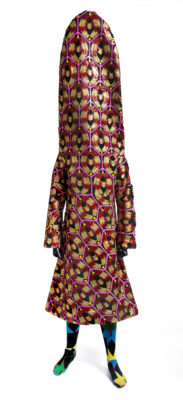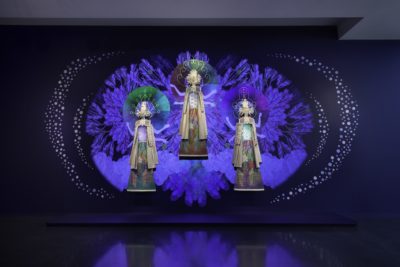
On March 12, the Museum of Arts and Design will open an exhibition about clothing used as a medium of expression for fine art. The show, which calls this practice “garmenting,” is curated by Alexandra Schwartz, adjunct professor in FIT’s Art Market Studies MA program. Garmenting: Costume as Contemporary Art features 35 international artists whose work converts dress into “a critical tool for exploring issues of subjectivity, identity, and difference.”

Garmenting is divided into five sections. “Functionality” explores the concept of wearability: One artist fashioned a skirt out of razor blades, which may be très chic, but challenging to wear. “Gender” includes works shaped by feminist and queer theory that upend conventional roles—drag ensembles, for instance. “Cultural Difference” examines the sometimes surprising ways that culture determines dress: In the mainstream media, the traditional image of the American cowboy is a white male, but some historians have pointed out that this picture is incomplete; Garmenting includes an artist’s vision for Black cowboy attire. The “Performance” section comprises outfits used in works of performance art: Fiber artist Nick Cave fashions elaborate garments he calls “sound suits” because they rustle when he wears them. “Activism” highlights clothes artists wear to express political statements—particularly about gender, sexuality, and cultural difference.
Schwartz got the idea for the show 10 years ago, when she curated an exhibition about artist Saya Woolfalk. In her work, Woolfalk constructs installations that evoke an imaginary futuristic matriarchal society. Her tableaux feature mannequins wearing elaborate costumes she has designed. In related, ritualistic presentations, performers wear Woolfalk’s outfits. Schwartz says she was fascinated by how the artist used garments in different contexts. “They’re costumes for a cast of characters, but they’re also sculptures.” Schwartz also curated a show that included artist Louise Bourgeois, who assembled scraps of old clothes, including her wedding trousseau, into collage. Artists, Schwartz realized, were using clothing in surprising ways—“to talk about both personal and group identities.” She says she was amazed, once she’d settled on the topic, by how many artists were working in this vein. “I learned about them from other artists, students—even the internet,” she says. The enormous variety of approaches surprised her, too.

Her Art Market Studies students won’t just get to see a show their professor curated, they’ll be part of the exhibition themselves. The artist Franz Erhard Walther creates objects that are worn by audience members for interactive performances. On Garmenting’s opening weekend, students will serve as facilitators to “activate” these works. Schwartz, who has curated shows at MoMA and the Montclair Art Museum, and also teaches in FIT’s History of Art Department, hopes the show leaves the audience with a richness of interpretations. “Clothing has private and public meaning,” she says.
Garmenting is on view from March 12 to August 14.
